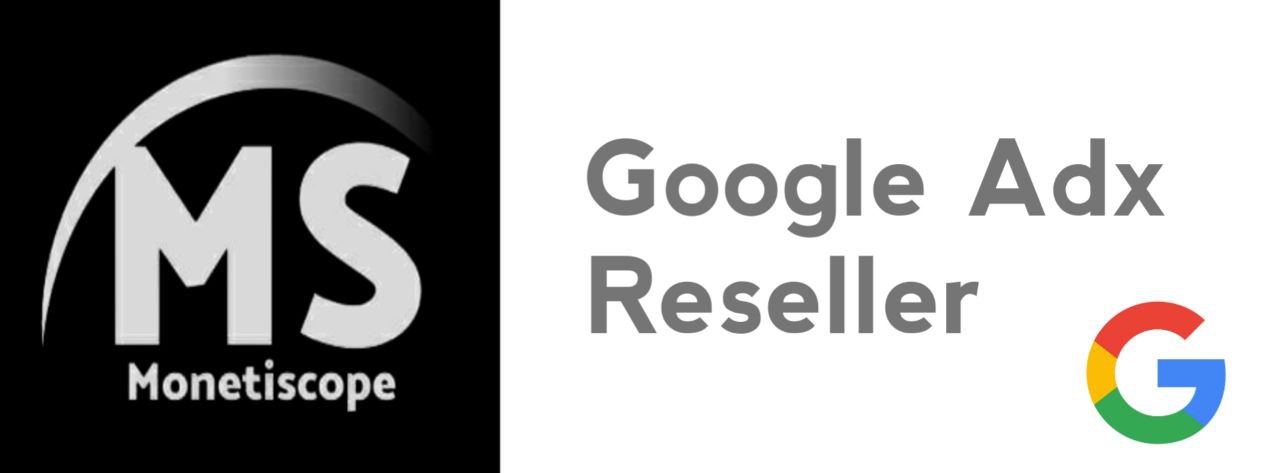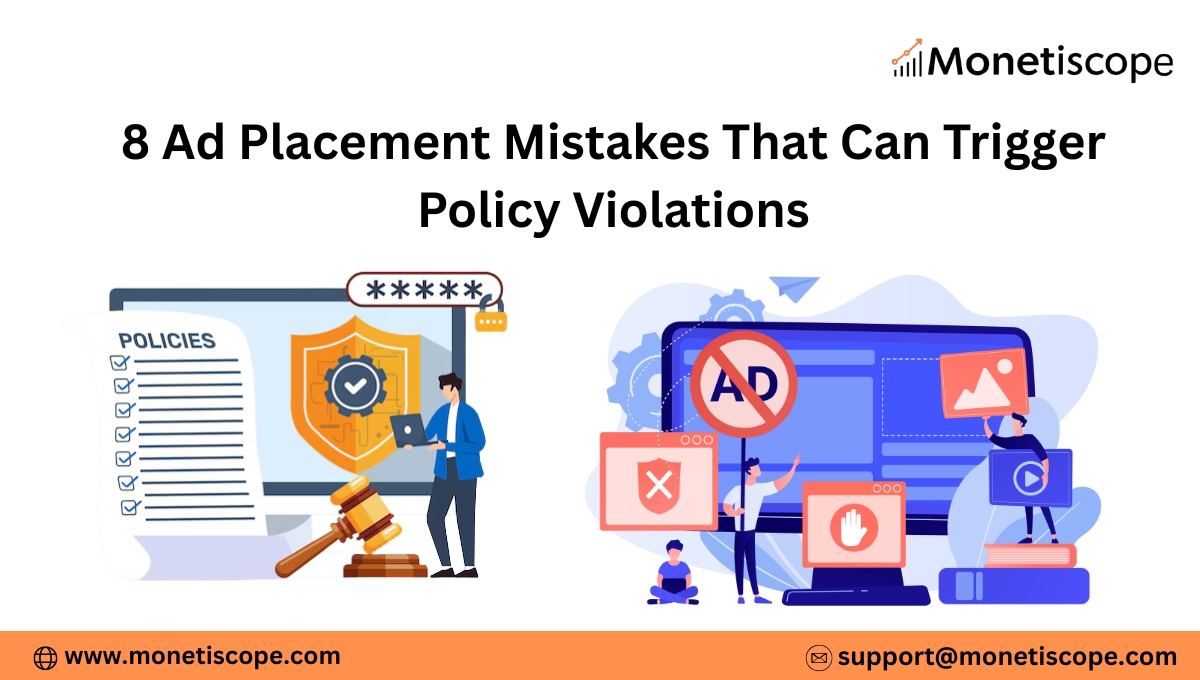Monetizing your website or app sounds simple—add ads, get paid. But in reality, ad placement needs to follow strict policies. One wrong move, and your account could be penalized—or even banned.
Ad Placement Mistakes That Can Trigger Policy Violations are more common than you think, especially if you’re optimizing aggressively for revenue. The challenge? Google doesn’t always warn you before taking action. That’s why it’s critical to understand what not to do.
Let’s break down the most common ad placement mistakes and how to fix them—without killing your earnings.
1. Ads Too Close to Clickable Elements
This is one of the easiest mistakes to make. Placing ads too close to navigation buttons, image carousels, menu icons, or other interactive elements can easily trigger accidental clicks. Google considers this a violation—even if unintentional.
For example, on mobile, if a banner ad sits right beneath a menu button, a user might click the ad while trying to open the menu. That’s a problem.
Why It’s Risky:
- It generates invalid traffic and accidental clicks.
- Google sees it as deceptive behavior.
- It could reduce your Quality Score and advertiser trust.
What to Do Instead:
Add at least 20–30px of padding between ads and clickable UI components. Test placements on multiple screen sizes to ensure no overlap occurs. Prioritize clean design over forced impressions.
2. Floating or Sticky Ads That Obstruct Content
Sticky ads—especially on mobile—can boost viewability. But when they cover essential content or make it hard to scroll, you’ve crossed the line.
Why It’s Risky:
- It degrades user experience.
- Obstructive elements violate Google’s Better Ads Standards.
- Can lead to policy violations or a drop in ad demand.
What to Do Instead:
Use collapsible anchor ads or configure sticky units with a clear close button. Make sure they don’t interfere with the page’s content or accessibility.
Test ads on slow networks and small screens. What looks fine on desktop might be disastrous on a 5-inch phone.
3. Ads Placed Inside Dropdowns or Expanding Menus
Ads hidden inside dropdowns, accordions, or expandable tabs might seem clever—but they’re a violation waiting to happen.
Why? Because these placements are often not immediately visible, yet still generate impressions. Google counts that as “misleading ad serving.”
Why It’s Risky:
- It tricks advertisers into paying for impressions that users never saw.
- It violates viewability standards.
- It could lead to account warnings or suspensions.
What to Do Instead:
Always place ads in fully visible sections of your page. If a menu or tab must contain an ad, make sure it opens automatically and clearly signals its presence. Transparency matters.
4. Ads Disguised as Content
This one is a big red flag. If you make an ad look like part of your blog post or news article, users won’t know the difference—and that’s the problem.
Google’s policies require clear labeling of ads. If a native ad looks exactly like editorial content, it’s considered misleading.
Why It’s Risky:
- Violates Google’s misrepresentation policies.
- Reduces trust in your brand.
- Can harm long-term monetization potential.
What to Do Instead:
Use clear labels like “Sponsored,” “Ad,” or “Advertisement.” Visually separate ads using contrasting backgrounds or borders. It’s okay to use native styles—just don’t blend them too much.
5. Ads on 404 Pages, Thank You Pages, or No-Content Pages
This mistake often goes unnoticed. If you’re showing ads on broken pages, empty categories, or “thank you for subscribing” messages, you’re violating ad policies.
These pages don’t offer real content—so serving ads there is considered “low-value inventory.”
Why It’s Risky:
- Google doesn’t want advertisers paying for low-engagement impressions.
- It can trigger an Ad Serving Limit or full disablement.
- It affects overall site credibility.
What to Do Instead:
Use conditional logic in your ad tags. Make sure ads load only on pages with meaningful content. Exclude thank you pages, search with zero results, or broken links from ad serving.
6. Multiple Ads Above the Fold (Especially on Mobile)
Yes, “above the fold” ads perform better—but stacking too many of them is a bad move.
Google has clear guidelines about content-to-ad ratio. If the first screen is mostly ads, users may bounce, and you could face Better Ads Standard violations.
Why It’s Risky:
- Hurts Core Web Vitals like CLS and LCP.
- Reduces user trust and increases bounce rate.
- Can lead to policy warnings or revenue dips.
What to Do Instead:
Limit to one ad above the fold—preferably a banner or native unit. Let content appear first. This creates a better experience and keeps you compliant.
7. Interfering with Core Web Vitals
Ad placements that shift your content or delay page load are now a big concern. Google uses Core Web Vitals to measure performance—and bad ad setups can ruin your scores.
Why It’s Risky:
- Causes layout shifts (CLS), slow load (LCP), and user frustration.
- Lowers your search ranking.
- May trigger Google Ad Experience Reports and policy flags.
What to Do Instead:
Use predefined ad sizes and avoid dynamically injecting ads late. Use lazy loading and prioritize script efficiency. Test your pages with Google’s PageSpeed Insights.
A good user experience supports both SEO and revenue.
8. Incentivizing Ad Clicks or Impressions
You cannot ask users to click on ads—or offer rewards for doing so. This might sound obvious, but many publishers still break this rule unintentionally.
Phrases like:
- “Click to support us”
- “Check out our sponsors”
- “Earn coins by clicking ads”
…are all against policy.
Why It’s Risky:
- Google treats this as invalid activity.
- It can lead to account suspension or termination.
- Advertisers lose trust, and your eCPMs drop.
What to Do Instead:
Let your content do the heavy lifting. Never push users toward ad interactions. Focus on engaging, high-quality content that keeps users around—and lets ads perform organically.
Google Doesn’t Always Warn You
Here’s the scary part: many publishers think they’re doing everything right—until one day, they get hit with a policy violation email or worse, see a sudden drop in revenue.
Google often enforces its ad placement policies automatically. That means if you’re making these ad placement mistakes that can trigger policy violations, you might never get a warning.
You’ll just notice:
- Ads stop showing.
- eCPM suddenly drops.
- Ad serving limits (especially if you’re using AdSense or AdX)
- Full account suspension or ban
How to Stay Compliant (and Still Optimize Revenue)
Good news: You don’t have to choose between compliance and earnings.
Here’s how to strike the right balance:
1. Audit Your Layout Regularly
Check your site or app across devices and browsers. Watch for overlapping ads, mobile glitches, or blocked content.
2. Follow AdSense and AdX Official Guidelines
Bookmark and review:
- Google Publisher Policies
- Better Ads Standards
- Ad Manager Ad Implementation Guides
3. Partner with a monetization expert:
A reliable monetization partner can help ensure policy compliance while boosting your revenue across multiple ad networks.
Worried About Ad Placement Violations?
Reach out to us at support@monetiscope.com
We’ll audit your setup and help you fix what’s holding you back.
Final Word
Avoiding ad placement mistakes that can trigger policy violations is about being thoughtful, not fearful. Follow best practices, stay updated, and don’t hesitate to seek help.
FAQs – Ad Placement Mistakes That Can Trigger Policy Violations
What is the biggest ad placement mistake to avoid?
Placing ads too close to clickable elements is one of the most common and dangerous mistakes. It leads to accidental clicks and invalid traffic.
Are sticky ads always against Google policy?
No, but if sticky ads obstruct content or lack a close button, they can violate Google’s guidelines. Use them wisely.
Can I show ads on search result pages?
Only if the page contains meaningful results. If a search returns “no results” and still shows ads, that could lead to a policy flag.
What is considered incentivizing ad clicks?
Telling users to click on ads, or rewarding them for doing so (coins, points, prizes), is strictly against policy.
How can I test if ads affect Core Web Vitals?
Use tools like Google PageSpeed Insights or Lighthouse. Pay special attention to CLS and LCP scores.
Is it okay to use native ads that blend into content?
Yes, but they must be clearly labeled with terms like “Ad” or “Sponsored.” Misleading design is not allowed.
What happens if I get a policy violation notice?
Google may limit ad serving, reduce fill rate, or suspend your account. Fix the issue immediately and request a review.
Can ad placement mistakes lower my revenue?
Absolutely. Even without suspension, poor placement leads to lower viewability, invalid traffic, and lower eCPMs.


